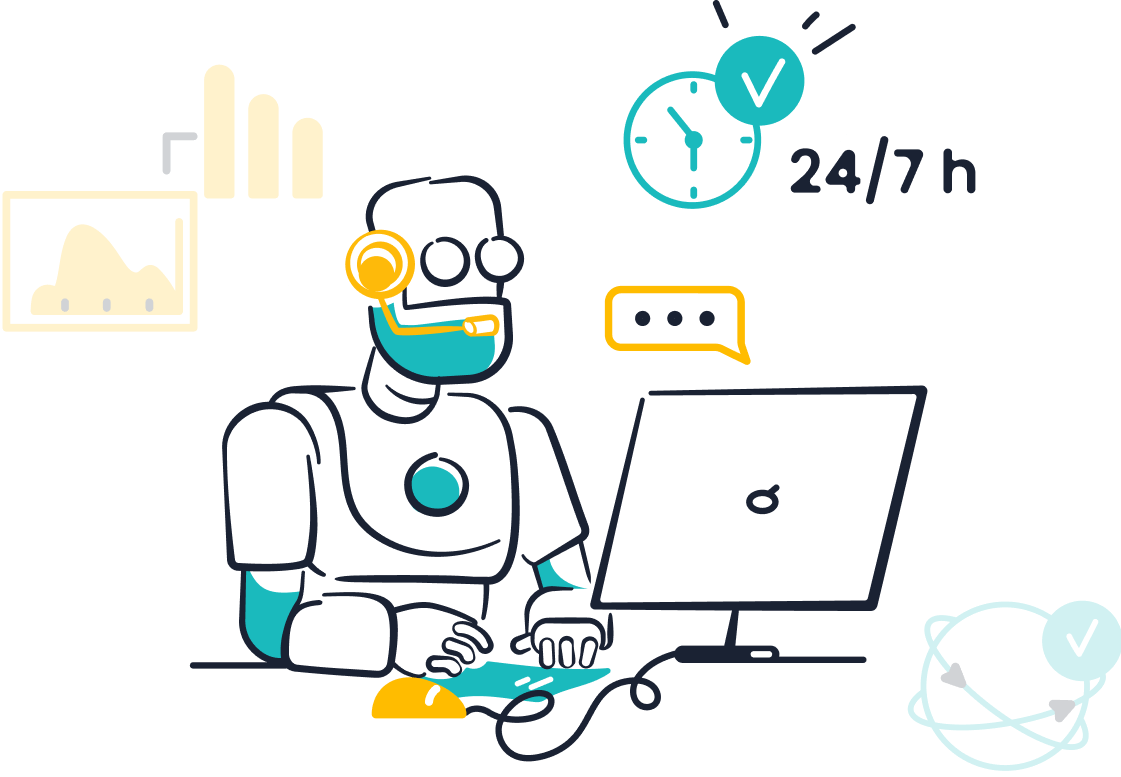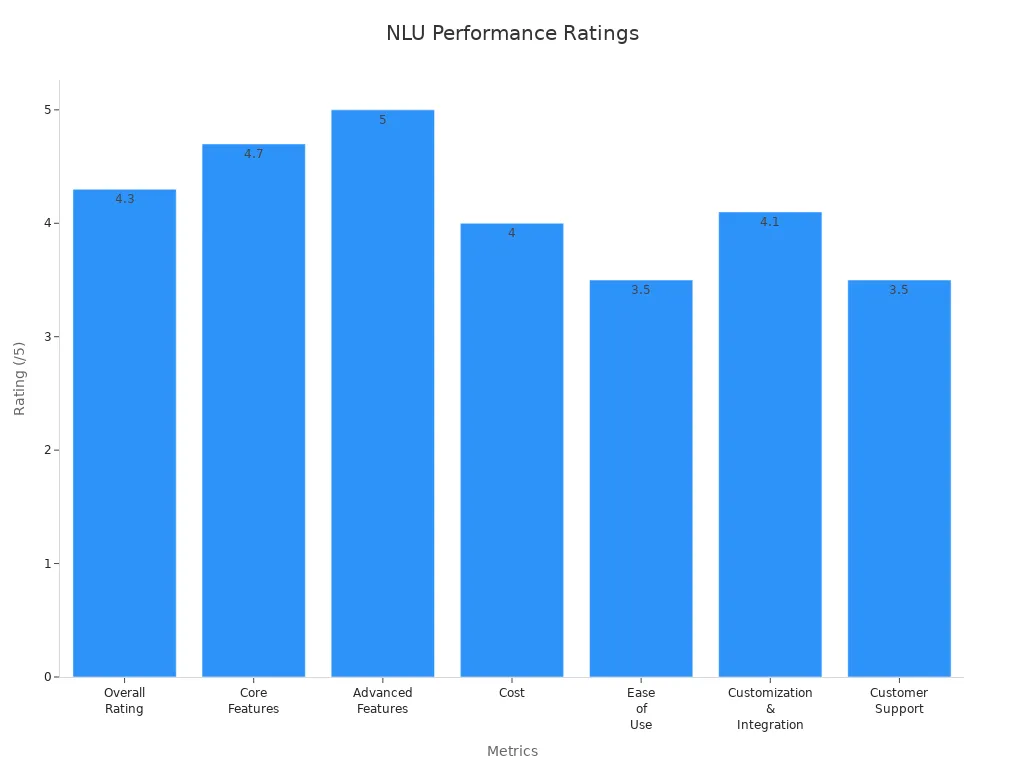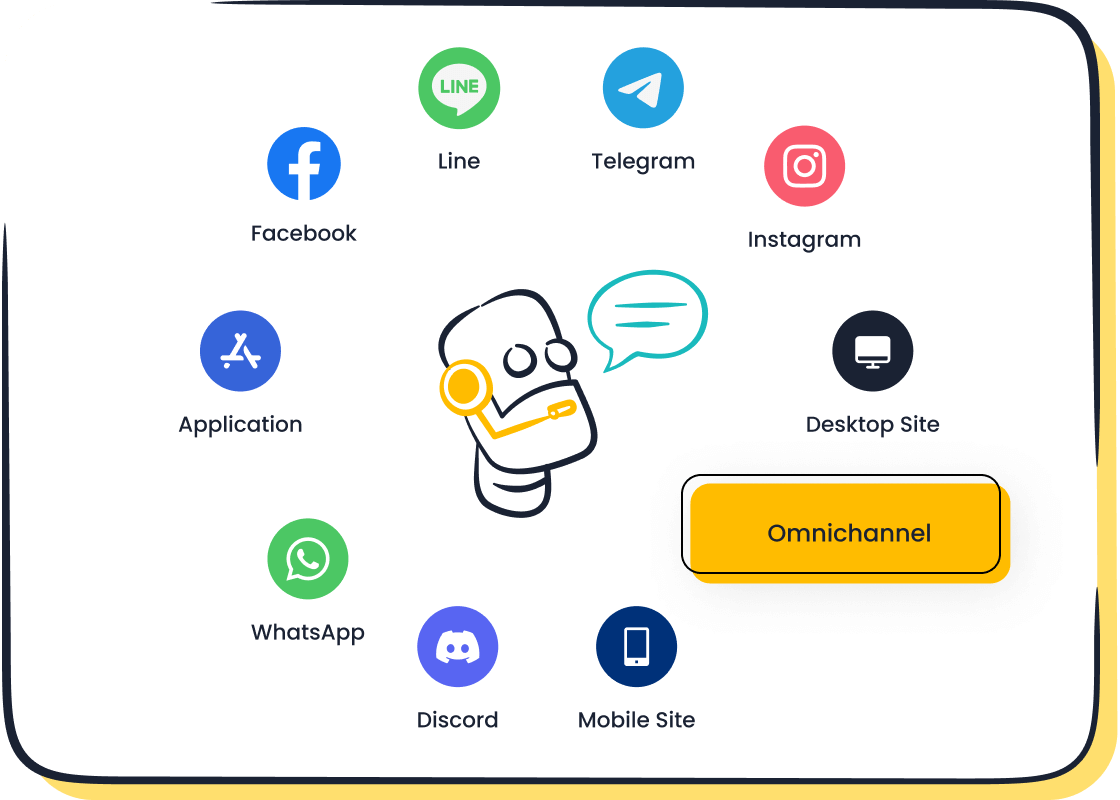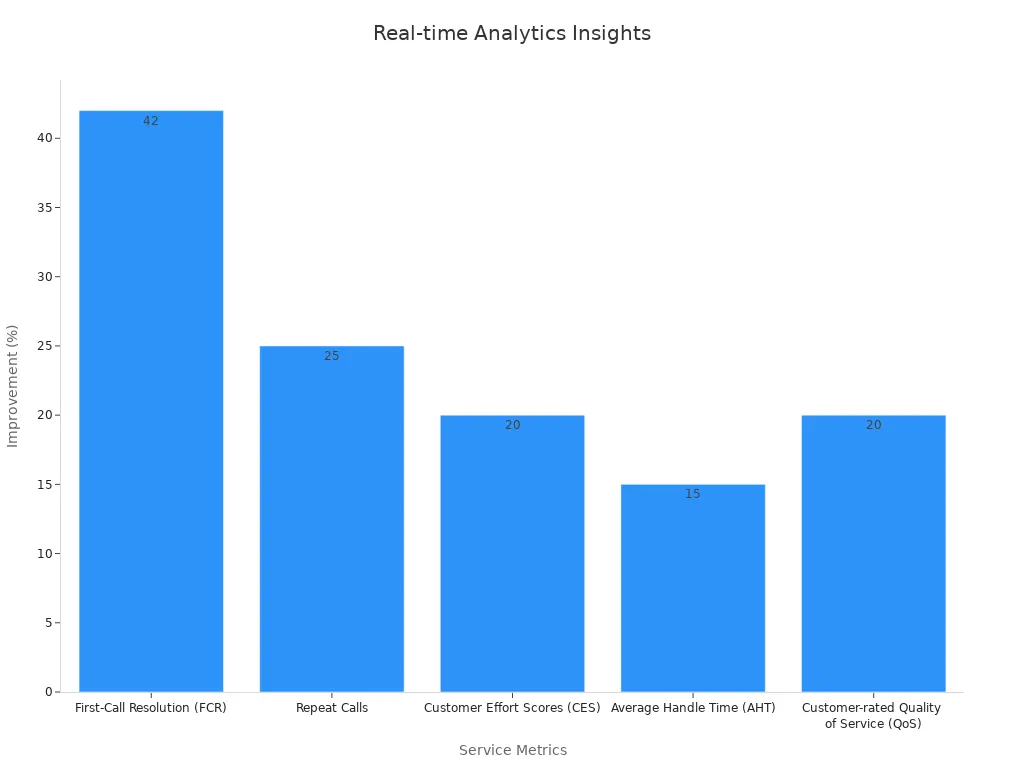Best Tools for AI Customer Sentiment Analysis This Year

If you want to boost your customer service or ecommerce results, picking the right ai customer sentiment analysis tool matters more than ever. Top choices like Sobot Chatbot, Lexalytics, Qualtrics XM, and IBM Watson NLU now offer real-time emotion detection and multilingual support. Sobot AI helps you connect with global customers and spot feedback trends quickly. With global ecommerce sales topping $5.5 trillion and 95% of shoppers reading reviews before buying, the right tool can help you keep customers happy and improve your business.
Top AI Customer Sentiment Analysis Tools

Quick List of Leading Tools
When you look for the best ai customer sentiment analysis tools, you have many great options. Here are some of the top choices for 2025:
- Sobot Chatbot: Known for real-time sentiment analysis, multilingual support, and omnichannel integration.
- Lexalytics: Offers industry-specific customization and strong multilingual analysis.
- Qualtrics XM: Delivers multi-channel sentiment analytics and advanced digital experience tools.
- IBM Watson NLU: Provides deep natural language understanding and flexible pricing.
- Brand24: Monitors social media and online mentions for brand sentiment.
- MonkeyLearn: Lets you build custom sentiment models with no coding.
- Chattermill: Focuses on unified customer feedback and actionable insights.
- Wonderflow: Handles feedback in over 180 languages with high accuracy.
Standout Features and Benefits
Each tool brings something special to the table. Here’s what makes them stand out:
- Sobot Chatbot: You get 24/7 AI-powered support, real-time sentiment tracking, and seamless integration with channels like WhatsApp and SMS. Sobot’s chatbot can boost productivity by 70% and cut service costs by up to 50%. It’s easy to set up with a no-code interface and supports multiple languages.
- Lexalytics: Customizes sentiment analysis for your industry. Best Western used it to spot guest issues and improve service.
- Qualtrics XM: Invested $500 million in AI for fast, scalable analysis across voice, chat, and surveys. Shake Shack uses it to get insights that help teams work better together.
- IBM Watson NLU: Scores high for advanced features (5/5) and core capabilities (4.7/5).

Best Use Cases for Each Tool
You might wonder which tool fits your business best. Here’s a quick guide:
| Tool | Best For | Example Outcome |
|---|---|---|
| Sobot Chatbot | Retail, e-commerce, finance, gaming | 70% higher productivity, 50% lower service costs |
| Lexalytics | Hospitality, retail, enterprise | Improved guest experience for hotels |
| Qualtrics XM | Large enterprises, multi-channel support | Faster insights, better team collaboration |
| IBM Watson NLU | Tech, research, global brands | Flexible pricing, deep language analysis |
| Brand24 | Marketing, PR, brand monitoring | Real-time social sentiment tracking |
| MonkeyLearn | Custom projects, startups | No-code model building for unique needs |
| Chattermill | Telecom, customer experience teams | 25% more positive feedback, higher NPS |
| Wonderflow | Global brands, multilingual support | 95% accuracy, 65% faster cross-market analysis |
You can use ai customer sentiment analysis to track reviews, improve support, and boost sales. Many companies see faster ticket resolution and happier customers when they use these tools.
What Is AI Customer Sentiment Analysis?
Definition and Core Concepts
You might wonder what ai customer sentiment analysis really means. It’s a smart way to figure out how your customers feel by looking at what they write or say. This technology uses artificial intelligence, natural language processing, and machine learning to spot emotions in text—like reviews, emails, or social media posts.
- It can tell if a message is positive, negative, or neutral.
- Some tools even go deeper, picking up on feelings like excitement or frustration.
- You’ll see this called opinion mining or emotion AI.
- Newer systems use large language models, like ChatGPT, to understand context and tone better than ever before.
- Businesses use these insights to make decisions about products, pricing, and service.
How It Works in Customer Service
In customer service, ai customer sentiment analysis works behind the scenes to help you respond faster and smarter. Here’s a quick look at how it fits into your daily operations:
| Metric / Feature | What It Means for You |
|---|---|
| Response Time | You answer customers more quickly, keeping them happy. |
| Customer Satisfaction Scores | You measure how customers feel after each interaction. |
| Sentiment Analysis | AI checks if messages are positive, negative, or neutral, guiding your next steps. |
| Engagement Rates | You see how well your team connects with customers. |
| First Call Resolution | You solve problems on the first try, boosting satisfaction. |
| Compliance Adherence | You follow rules and keep service consistent. |
Sobot’s AI-powered chatbot, for example, can analyze messages in real time, spot unhappy customers, and help you fix issues before they grow. This means you can improve productivity and keep your service running smoothly.
Why It Matters for Businesses
You want your customers to feel heard and valued. That’s where ai customer sentiment analysis makes a big difference.
- It helps you spot trends in feedback, so you can fix problems fast.
- You can track how people feel about your brand across different channels, like chat, email, or social media.
- Real-time insights let you adjust your approach, improve products, and boost customer loyalty.
- Tools like Sobot give you a clear picture of customer emotions, helping you make smarter business moves.
Tip: Companies that use sentiment analysis often see higher satisfaction scores and better reviews. You can learn more about the basics of sentiment analysis from IBM’s guide.
Sobot Chatbot and Other Top Tools Reviewed

Sobot Chatbot Overview and Features
If you want a tool that makes customer conversations smarter and faster, Sobot Chatbot stands out. You get AI-driven automation that handles regular questions, helps your agents, and keeps your business running 24/7. Sobot supports many languages, so you can talk to customers around the world without hiring extra staff. You can connect with people on WhatsApp, SMS, live chat, and more—all from one place.
Here’s what makes Sobot Chatbot a top choice for ai customer sentiment analysis:
- AI-powered automation: Sobot solves up to 70% of routine queries, freeing your team for bigger tasks.
- Multilingual support: You can serve customers in their language, breaking down barriers and boosting satisfaction.
- Omnichannel integration: Manage chats, calls, and tickets from one dashboard.
- No-code setup: You can build and launch workflows with a simple point-and-click interface.
- Real-time sentiment analysis: Sobot spots unhappy customers instantly, so you can act fast.
Real-world results show the power of Sobot’s approach:
- Klarna cut service costs by 40% and improved response times by 82%.
- Camping World used AI voice agents to reduce wait times by 33 seconds.
- Motel Rocks deflected 43% of tickets to AI, raising customer satisfaction by 9.4%.
- 6 in 10 consumers love instant answers, and Sobot delivers that 24/7.
Sobot Chatbot works best for retail, ecommerce, finance, gaming, and any business that wants to scale support, save money, and keep customers happy. You can learn more about Sobot’s chatbot here.
Lexalytics Overview and Features
Lexalytics helps you understand how customers feel by analyzing text from reviews, surveys, and social media. You get customizable dashboards and visual analytics, which make it easier to spot trends and take action. Lexalytics supports multiple languages, so you can use it for global feedback.
| Metric / Sentiment Class | Lexalytics Semantria API | IBM Watson NLU | Google Cloud NL API | Notes |
|---|---|---|---|---|
| Overall Accuracy | ~51.8% | 79% | 73.4% | Lexalytics least accurate |
| Negative Sentiment Precision | <87.1% | 87.1% | 94.4% | Lower than leaders |
| Positive Sentiment Recall | 52% | 70%+ | 89% | About half correct |
| Average Response Time (seconds) | 1.321 | 0.253 | 0.299 | Lexalytics slowest |
You might find Lexalytics useful if you need industry-specific customization and want to visualize sentiment trends. However, its accuracy and speed are lower than some other providers, so it fits best for businesses that value customization over raw performance.
Qualtrics XM Overview and Features
Qualtrics XM gives you a powerful platform for collecting and analyzing customer feedback. You can use it to track sentiment across surveys, chats, and social media. The dashboards are detailed, and you get real-time insights to help your team improve.
- Real-time sentiment analysis helps you spot issues fast.
- Visual dashboards make it easy to see trends.
- Used by companies like NHS, Tetra Pak, and Finder for experience management.
Users rate Qualtrics XM at 4.4 out of 5 stars. They like the analytics and real-time insights, but some find the setup complex and the cost high (about $2,274/month on average). It works best for large organizations that need deep analytics and have the resources to manage a robust platform.
IBM Watson NLU Overview and Features
IBM Watson NLU is a leader in ai customer sentiment analysis. You can use it to process reviews, emails, and social media posts, finding out if people feel positive, negative, or neutral. Watson NLU supports up to 13 languages and lets you customize models for your industry.
| Model Type | Accuracy Level | Best Use Case |
|---|---|---|
| Basic models | 70.5% | General content analysis |
| Standard models | 81.5% | Multi-channel feedback |
| Domain-specific | 85%+ | Industry-focused analysis |
- Watson NLU can reach up to 96% accuracy with custom models.
- It detects emotions like joy, anger, and sadness.
- You can scale it for small or large businesses with pay-as-you-go pricing.
Many companies use Watson NLU to cut resolution times by over 50% and boost customer satisfaction. If you want advanced analytics and strong language support, Watson NLU is a solid pick.
Brand24 Overview and Features
Brand24 helps you monitor what people say about your brand online. You can track mentions, measure reach, and see how people feel about your business in real time. The tool sorts mentions as positive, neutral, or negative, so you always know your brand’s reputation.
| Metric | What It Does |
|---|---|
| Sentiment Analysis | Sorts mentions by emotional tone |
| Reach | Shows how many people see your brand |
| Engagement | Tracks likes, shares, and comments |
| Presence Score | Measures your brand’s online popularity |
| AVE | Calculates the value of media exposure |
| Hashtag Performance | Analyzes which hashtags boost your brand |
| Trending Topics | Finds hot topics and trends in your industry |
Brand24 works well for marketing, PR, and social media teams who want to keep an eye on brand health and compare themselves to competitors.
MonkeyLearn Overview and Features
MonkeyLearn lets you build custom sentiment analysis models without writing code. You can train the tool to spot positive, negative, or neutral feedback in your own data. The drag-and-drop interface makes it easy for anyone to use.
- No coding needed—just upload your data and start training.
- Custom models fit your unique business needs.
- Works well for startups and teams with special requirements.
You can use MonkeyLearn to analyze support tickets, reviews, or social media posts. It’s a great choice if you want flexibility and control over your ai customer sentiment analysis process.
AI Customer Sentiment Analysis Comparison Table
Feature Breakdown
When you compare ai customer sentiment analysis tools, you want to see how each one stacks up on important features. Here’s a quick table to help you spot the differences:
| Feature | What It Means | Why It Matters for You |
|---|---|---|
| Analytics Strength | Advanced AI, phrase-level analysis | Better insights and smarter decisions |
| Sentiment Accuracy | How often the tool gets it right (up to 98%) | More reliable feedback and fewer mistakes |
| Explainability | Clear, easy-to-understand results | You trust what the AI tells you |
| Real-Time Capability | Instant analysis and alerts | You can act fast and fix issues right away |
Sobot stands out with real-time sentiment tracking and strong analytics. You get instant feedback, so you never miss a chance to improve your service.
Pricing and Integrations
You probably want to know how much these tools cost and how they fit into your current systems. Here’s a table that breaks it down:
| Tool | Pricing Model | Price Range / Notes | Integration Options | Multilanguage Support |
|---|---|---|---|---|
| Sobot Chatbot | Custom, scalable | Based on business needs | Omnichannel, WhatsApp, SMS, API | 100+ languages |
| Qualtrics | Custom quote | Varies by usage | APIs, SDKs, many platforms | 16 languages |
| Google Cloud NLU | Pay-as-you-go | Per 1,000 characters, free credits | REST API, client libraries | 16 languages |
| Hootsuite | Subscription | $99–$249/month | REST API, notifications | 186 languages |
| Meltwater | Custom quote | On request | API for data import/export | 218 languages |
Tip: Sobot’s flexible pricing and easy integrations make it a great fit for growing businesses that want to connect with customers everywhere.
Best Fit by Business Type
Not every tool works for every business. Here’s how you can match the right ai customer sentiment analysis tool to your needs:
| Business Type | Best Tool Features Needed | Why It Fits |
|---|---|---|
| Retail/E-commerce | Real-time, omnichannel, scalable | Sobot helps you handle lots of customers fast |
| Large Enterprise | Deep analytics, custom models | Qualtrics and Google Cloud NLU offer depth |
| Marketing/PR | Social media, trend tracking | Hootsuite and Meltwater track mentions |
| Startups/Small Biz | Easy setup, cost-effective | Sobot and Hootsuite are simple to launch |
You want fast processing, high accuracy, and tools that grow with you. Sobot’s ai customer sentiment analysis gives you all that, plus support for many languages and channels.
Essential Features to Look For
Accuracy and Language Support
You want your sentiment analysis tool to get things right. High accuracy means you can trust the results and make better decisions. Look for tools that understand not just basic words, but also slang, sarcasm, and industry terms. If your business serves people from different countries, language support matters even more. Sobot, for example, supports over 100 languages, so you can connect with customers worldwide. This helps you break down barriers and reach more people.
Real-Time Analytics
Real-time analytics give you the power to act fast. When you know how customers feel right away, you can fix problems before they get bigger. Here’s what real-time analytics can do for you:
- Spot customer emotions instantly, so you can respond quickly.
- Prioritize urgent issues and keep customers happy.
- Find recurring problems and solve them before they spread.
- Get alerts for sudden changes in sentiment and prevent crises.
- Make smarter decisions for your products and marketing.
| Metric | Improvement Percentage | Impact Description |
|---|---|---|
| First-Call Resolution (FCR) | 42% increase | Fewer repeat calls, higher customer satisfaction |
| Repeat Calls | 25% reduction | Improved problem resolution, fewer unnecessary follow-ups |
| Customer Effort Scores (CES) | 20% reduction | Easier customer interactions, smoother experience |
| Average Handle Time (AHT) | 15% decrease | More efficient interactions, reduced service costs |
| Customer-rated Quality of Service (QoS) | 20% improvement | Enhanced interactions, better brand reputation and loyalty |

Integration with Customer Platforms
You want your sentiment analysis tool to work with the platforms you already use. Integration makes your workflow smoother and helps you react to feedback faster. Here’s why it matters:
- Real-time analysis lets you respond to feedback right away.
- AI learns from every interaction, so accuracy keeps improving.
- You can handle more customer data without hiring more people.
- Tools like Sobot connect with WhatsApp, SMS, and live chat, so you never miss a message.
- Big brands like Coca-Cola and Netflix use integrated sentiment analysis to guide product launches and improve customer experience.
Tip: Seamless integration gives you a competitive edge and helps you adjust your strategy quickly.
Scalability and Customization
Your business will grow, and your tools should keep up. Scalability means you can handle more customers without losing quality. Customization lets you tune the tool to your industry and needs. Many AI tools, including Sobot, let you adjust settings for your business, train the system with your own data, and monitor results over time. This way, you get insights that fit your goals and language.
- Scalable tools adapt as your business grows.
- Customization lets you match the tool to your industry and brand voice.
- Integration with chatbots and cloud platforms makes adoption easy.
- You can train the system with your own data for better results.
Note: The right features help you deliver better service, save time, and keep customers coming back.
Choosing the Right AI Customer Sentiment Analysis Tool
Assessing Business Needs
Before you pick an ai customer sentiment analysis tool, you need to know what your business really needs. Start by looking at what matters most for your team and your customers. Here’s a handy table to help you compare the most important factors:
| Factor | Why It Matters |
|---|---|
| Accuracy | You want the tool to understand customer emotions clearly. |
| Speed | Fast analysis helps you react quickly to feedback. |
| Integration | The tool should work with your current systems. |
| Cost | Make sure it fits your budget and brings value. |
| Scalability | It should grow with your business. |
| Customization | You might need special features for your industry. |
| Usability | Easy tools save time for your team. |
| Data Privacy | Protect your customer data and follow rules. |
Many businesses use ai customer sentiment analysis to spot trends and improve service. For example, Sobot’s chatbot uses Natural Language Processing (NLP) to analyze messages in real time, helping you understand how customers feel and what they need.
Integration and Workflow
You want your ai customer sentiment analysis tool to fit right into your daily work. Good integration means you can connect the tool with your CRM, marketing, or support platforms. This makes it easy to track feedback and take action fast.
- Many companies use these tools to automate follow-ups and monitor social media.
- Sobot connects with WhatsApp, SMS, and live chat, so you never miss a message.
- Some businesses, like Company X, used no-code tools to spot customer issues and reduce negative reviews.
Tip: When you combine sentiment analysis with your workflow, you get better dashboards, smarter marketing, and happier customers.
Budget and ROI
Budget is always important. You want to make sure your ai customer sentiment analysis tool gives you a good return on investment (ROI). Look at costs like setup, training, and ongoing fees. Then, check how the tool helps you keep customers, reduce churn, and boost satisfaction.
You can track ROI with numbers like customer retention rate, churn rate, and CSAT scores. Sobot’s flexible pricing lets you scale as you grow, so you only pay for what you need. Real-time insights help you make smarter decisions and see the value of your investment.
Note: Using ROI metrics helps you show the value of your tool to your team and leaders.
Testing and Implementation
Testing your ai customer sentiment analysis tool is key before you roll it out. Here’s a simple step-by-step plan:
- Try a free trial or demo to see if the tool fits your needs.
- Check how well it understands your industry’s language and emotions.
- Customize the tool for your business and connect it to your channels.
- Keep your data updated so the tool learns and improves.
- Use both AI insights and human judgment to make decisions.
- Set up feedback loops to keep making your tool better.
Sobot makes setup easy with a no-code interface and strong support. Many companies see better results when they test and adjust their tools before going live.
Real-World Applications and Success Stories

Ecommerce and Retail
You see AI changing the way stores and online shops connect with customers. Today, 93% of people check online reviews before choosing a local business, according to BrightLocal. Retailers who reply to reviews on Google or Yelp build trust and keep shoppers coming back. Social media listening tools help you track what people say about your brand, so you can spot trends and fix problems fast.
- AI-powered sentiment analysis tools read customer feedback and tell you how people feel about your products.
- You can use these insights to improve your service, update products, or launch new marketing campaigns.
- AI chatbots, like Sobot, answer questions 24/7 and help shoppers find what they need, which boosts satisfaction and sales.
- Personalized product suggestions based on shopping history make customers feel special and increase order sizes.
- Predictive analytics help you plan inventory and promotions, so you never miss a sale.
AI helps you handle tons of feedback, respond quickly, and make smarter business moves.
Call Centers and Customer Support
Call centers have seen big changes with AI tools. When you use AI to spot customer emotions, your agents can respond with more empathy. This leads to higher satisfaction scores and happier customers.
- Real-time sentiment insights help agents solve problems faster and reduce wait times.
- AI analytics show you which questions come up most, so you can train your team and improve scripts.
- Sobot’s omnichannel platform lets you manage chats, calls, and tickets in one place, making support smoother for everyone.
- Continuous feedback helps you adjust your approach and keep improving.
- Teams feel more confident when they have the right tools, which boosts morale and performance.
Integrating AI with your CRM means you can adapt on the fly and keep customers loyal.
Best Practices
Want to get the most from AI sentiment analysis? Follow these proven steps:
- Gather feedback from many places—social media, surveys, and interviews.
- Use advanced AI tools that understand context and emotions.
- Train your team to use these platforms well.
- Set up regular feedback reviews and define clear KPIs.
- Share insights across your company to guide decisions.
- Prioritize urgent issues and automate responses when possible.
- Dive deep with aspect-based analysis to see what customers like or dislike.
- Learn from leaders like Netflix, who use sentiment data to improve products.
| Best Practice | Impact |
|---|---|
| Multi-channel feedback | Broader, more accurate insights |
| AI-powered analysis | Higher accuracy and faster decisions |
| Team training | Better use of tools and happier agents |
| Regular KPI tracking | Clear measurement of progress |
Companies that follow these steps see higher NPS, more sales, and better customer experiences.
Future Trends in AI Customer Sentiment Analysis
Emerging Technologies
You will see some amazing new technologies changing how companies understand their customers. Here are a few trends you should watch:
- Multimodal analysis now combines voice, text, and even images to spot emotions. For example, tools can read a chat and listen to a call at the same time.
- Predictive analytics helps you guess what customers need before they ask. Salesforce found that 71% of businesses improved satisfaction using these tools.
- Machine learning creates personalized conversations. Domino’s Pizza used this to boost satisfaction by 25%.
- Advanced AI can now spot sarcasm, frustration, or excitement. It even picks up on confusion or hesitation.
- Real-time and post-chat analysis gives you instant feedback and helps managers train teams faster.
- AI now calculates customer satisfaction scores by looking at every conversation, not just surveys.
- Emotional intelligence in AI means it can sense subtle feelings, making customers feel heard. Forrester says this leads to a 20% jump in satisfaction and 15% more revenue.
- The conversation intelligence market is growing fast. Experts predict it will reach $4.8 billion by 2025.
Customers who feel positive during a chat are 70% more likely to return and 40% more likely to recommend your business.
Predictions for Customer Service
The future of customer service looks bright with AI. You can expect:
- Hyper-personalized experiences for every customer.
- Proactive service, where AI solves problems before you even notice them.
- Seamless support across chat, email, voice, and social media.
- By 2027, AI assistants will cut manual work by 60%. This means your team can focus on bigger projects.
- 73% of companies using AI for customer experience see higher satisfaction and a 25% rise in revenue.
- AI will help your team act with more empathy, making every chat feel more human.
Sentiment analysis is moving from just reporting feelings to driving real business decisions. You will see more automation, smarter insights, and even connections with smart devices (IoT) to predict what customers want next.
Preparing for the Future
You can get ready for these changes by taking a few simple steps:
- Start using AI tools that analyze feedback from all your channels.
- Train your team to understand and use AI insights.
- Choose platforms that grow with your business, like Sobot, which offers real-time analysis, omnichannel support, and easy integration.
- Focus on emotional intelligence. Remember, 80% of customers care as much about how you make them feel as what you sell.
- Set clear goals and track your progress with data.
Customers want to feel special. When you use AI to understand their emotions, you build loyalty and grow your business. Companies using these tools see a 25% increase in satisfaction and a 30% drop in complaints (Gartner).
You have many great tools to choose from, each with unique strengths. Check out the table below for a quick comparison:
| Tool Name | Use Case | Key Features | Pros |
|---|---|---|---|
| Sobot Chatbot | Omnichannel support | Real-time analysis, multilingual | Easy setup, cost savings |
| Qualtrics XM | Survey sentiment | CRM integration, dashboards | Scalable, customizable |
| Brandwatch | Social media analytics | Trend detection, benchmarking | Real-time alerts |
Try free demos, like Sobot Chatbot, to see what fits best. Stay updated with new trends and keep tracking customer feedback. When you use these tools and review your metrics, you can boost satisfaction and build loyalty.
FAQ
What is AI customer sentiment analysis?
AI customer sentiment analysis uses artificial intelligence to figure out how your customers feel. It checks messages, reviews, or chats for emotions like happiness or frustration. You get quick insights to help you improve service and boost customer satisfaction.
How does Sobot help with AI customer sentiment analysis?
Sobot gives you real-time ai customer sentiment analysis across chat, voice, and social media. You can spot unhappy customers fast and respond right away. Sobot’s chatbot supports over 100 languages and works 24/7, making it easy to connect with global shoppers.
Why should you use AI customer sentiment analysis in your business?
You want to know what your customers think. AI customer sentiment analysis helps you track feedback, fix problems quickly, and see trends. Businesses using these tools often see higher satisfaction scores and more repeat buyers. Learn more.
Can AI customer sentiment analysis work with different platforms?
Yes! Most tools, including Sobot, connect with platforms like WhatsApp, SMS, and live chat. You can manage all your customer conversations in one place. This makes it simple to track feedback and act fast.
Is AI customer sentiment analysis accurate?
AI customer sentiment analysis keeps getting better. Some tools reach up to 98% accuracy. Sobot uses advanced AI and a strong knowledge base to give you reliable results. You can trust the insights to guide your business decisions.
See Also
Best AI Solutions For Enterprise Contact Centers In 2024
Leading Speech Analytics Platforms For Call Centers This Year
Best Voice Of Customer Software Options To Explore In 2024
Comparing The Best Voice Of Customer Software Solutions Today
Comprehensive Guide To AI Software For Call Center Operations
